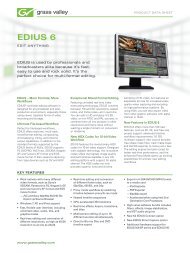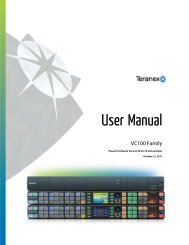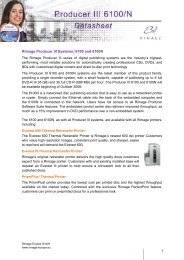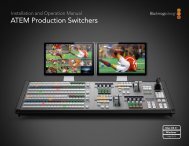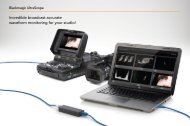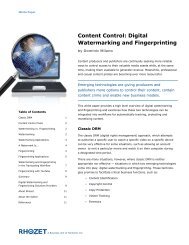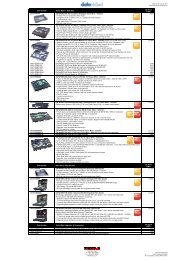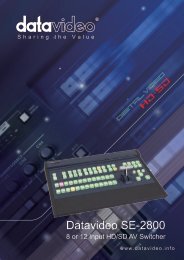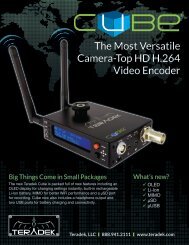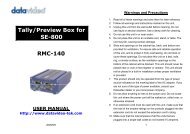Manual - Holdan.eu
Manual - Holdan.eu
Manual - Holdan.eu
Create successful ePaper yourself
Turn your PDF publications into a flip-book with our unique Google optimized e-Paper software.
9.0 RS232 PORT<br />
9.1 Connection<br />
Your unit is fitted with a standard ‘D9’ socket allowing it to be controlled from a<br />
computer or other type of terminal or console with a similar interface. Most<br />
computers fitted with an RS232 port, known as a ‘COM’ port, will have a ‘D9’<br />
plug on them. To enable connection between the two devices you may require<br />
a D9 male to female cable to link from the computer to your unit. This cable is<br />
not the same as a ‘null-modem’ cable as this has a female socket connector<br />
on both ends. See the Specifications section for a detailed pin connection list.<br />
Should your PC not have an RS232/COM port, it is possible to add an<br />
interface card into the PC to add this facility. Another option you could use is a<br />
USB to RS232 converter. Both methods will add a COM port to your PC,<br />
although you should be aware that these generally do not default to being<br />
‘COM1’ which is the default most RS232 applications will use.<br />
The default baud rate is 57600 with 8 data bits, 1 stop bit and no parity. This<br />
baud rate can be changed in the System menu to suit other programs if need<br />
be.<br />
9.2 Communications protocol<br />
The standard communications protocol for your unit is text-based and is<br />
detailed on our website. Also on our website, you can find the Windows<br />
Control Panel for your unit.<br />
The protocol is also bi-directional (unit and computer both send messages to<br />
each other), so that you can send changes to the unit, and it will also respond<br />
with any changes made via alternate methods (front panel buttons, menu<br />
changes and infra-red control). This enables any attached computer to be<br />
aware of any changes made to the unit from an alternative source rather than<br />
itself.<br />
What this means is that you can easily find out the exact command to send to<br />
the unit to tell it to perform a certain function. This can be seen by the data<br />
that is sent back to the computer when changing values on the unit. For<br />
instance, just by turning FREEZE on, by pressing the FREEZE button, will<br />
cause RS232 data to be sent to the computer that represents the command<br />
required to set FREEZE on. A second press, to turn FREEZE off, then sends<br />
the computer the command required to turn the FREEZE off.<br />
Note: Any command you send to the unit will be replied to either with an error<br />
code or with the actual changed value. This may be different to the one you<br />
sent; for example, if trying to set a value too high or too low.




